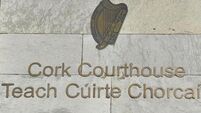Unsettled, weather we like it or not
People whose homes and businesses were inundated could not have been ready for rainfall on such a scale over a few hours.
But, fine, dry summers are the exception and we’re lucky to get even a few weeks of sunshine during the months of June, July and August, most years summer flooding is not unusual. After the wettest June on record, people might fear we’re heading into something apocalyptic, but you have to be optimistic to live here.













